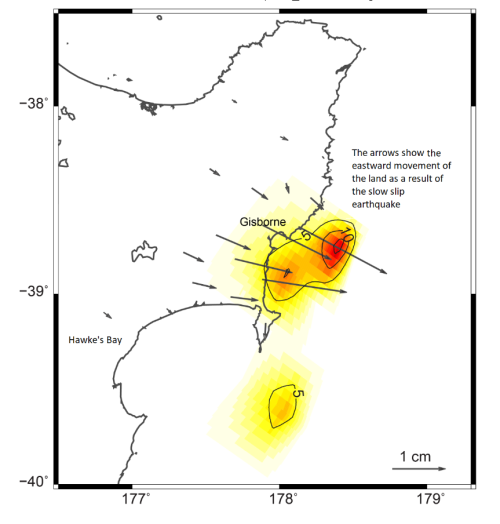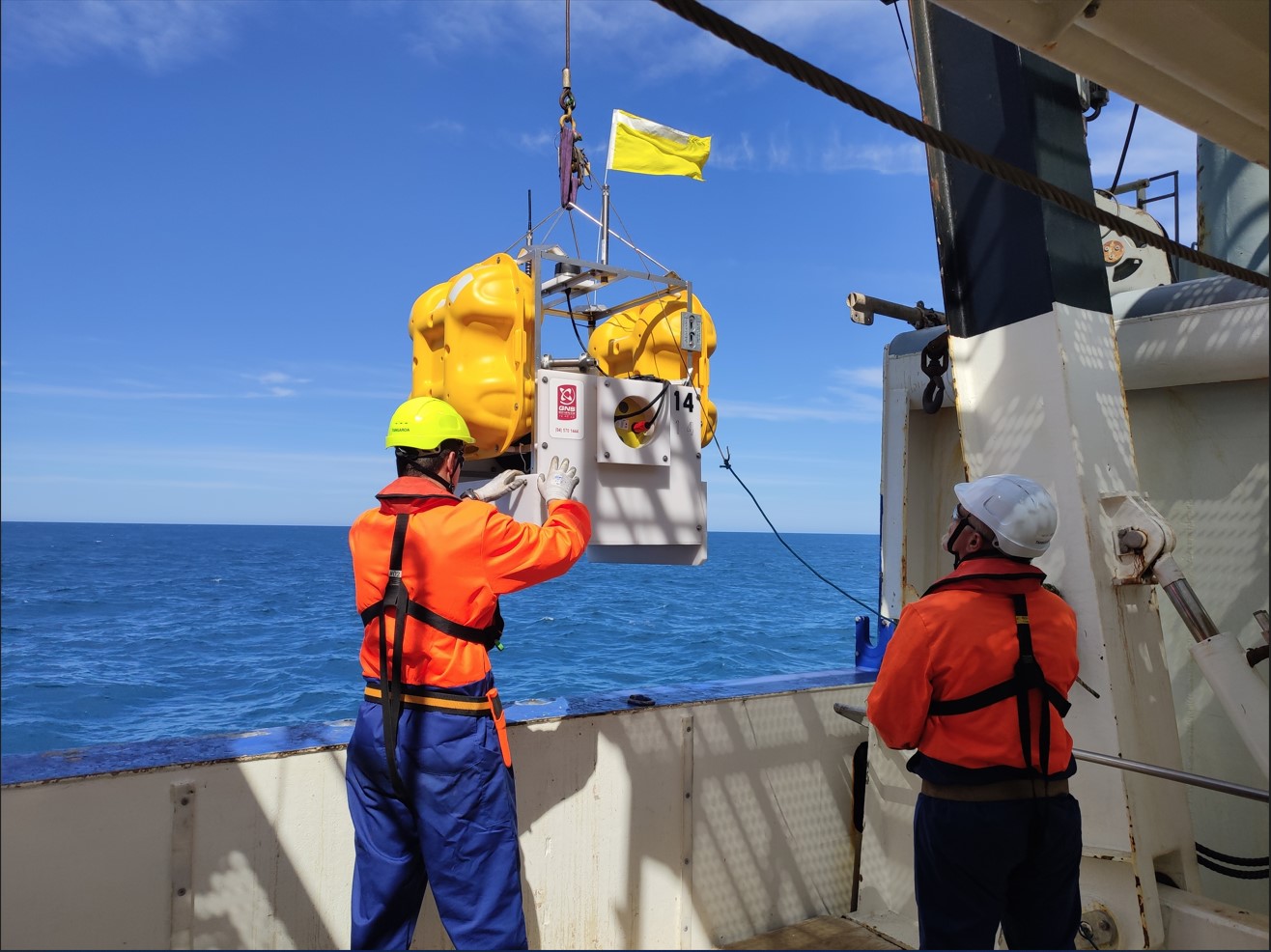
Slow slip earthquake occurring right now off the East Coast

A slow slip earthquake is currently taking place off the coast of Gisborne and Hawke’s Bay along the Hikurangi subduction zone, according to GNS Science and GeoNet.
A slow slip earthquake is different to a normal earthquake as pressure is released over days to weeks to months rather than suddenly. Slow slip earthquakes occur along subduction zones.
The Hikurangi subduction zone, New Zealand’s largest fault, is where the Pacific Plate dives or 'subducts' beneath the eastern North Island. This movement occurs at a rate of about 2-6cm a year.
Dr Laura Wallace from GNS Science said she expected this slow slip earthquake, which began this week, would last a couple more weeks and get larger.
“This event looks like the slow slip earthquakes that occurred in 2010 and 2014 offshore Gisborne."
“Usually these slow slip events occur quite shallowly – around less than 15 kilometres beneath the seafloor offshore Gisborne – and occur over a period of around two to three weeks.”
The slow slip earthquake is recorded live via very sensitive GPS instruments that measure in millimetres the sideways and up and down movement of the land
The current slow slip earthquake has moved some sites on the coast near Gisborne eastward by up to 3 centimetres.
Scientists have only been aware of the existence of these types of earthquakes for a couple of decades. They play a large and important role in accommodating movement between the tectonic plates.
In Zealand, they were first detected off the coast of Gisborne in 2002 after GPS instruments were permanently installed by GeoNet and since then dozens of slow slip earthquakes have occurred.
Scientists believe slow slip earthquakes are relieving stress in some areas of the subduction zone while increasing stress along other parts.
This slow slip earthquake has triggered multiple small earthquakes of around magnitude 2 to 4 off the coast of Hawke’s Bay near Mahia Peninsula.
There are a several national and international research projects studying the Hikurangi subduction zone as it is considered one of the best places in the world to study slow slip earthquakes.
Scientists have delpued ocean bottom seismometers offshore the east coast to collect data about the earthquakes that are happening there.
Seafloor pressure sensors have been installed to continuously record the upward and downward movements of the seafloor related to slow slip earthquakes.
These instruments are usually installed for only a year before they are retrieved and the data downloaded for analysis.
These project have been lead by GNS Science along with their partners in Japan and the United States.
Last year, the scientific drilling vessel, JOIDES Resolution installed two high-tech slow slip observatories up to 500 m beneath the seafloor in the area that the current slow slip is happening. These two earthquake observatories will remain in place over the next decade.
This is the first large slow slip event to occur since they have been installed, and the scientists involved in these projects are extremely excited about the data that they will be able to get from them.
“We are hoping that we will sense and record changes in the Earth during at least a few cycles of these slow slip earthquakes over the next several years so we can try and figure out why they occur,” Dr. Laura Wallace from GNS Science says.
A research voyage earlier this year, used an underwater remotely operated vehicle to retrieve data from two earthquake observatories.
A recent United States funded project also deployed seafloor flowmeters in the area of the current slow slip event. When those instruments are recovered, they will reveal how water moves around below the seafloor in response to the slow slip earthquakes.
The data collected will help scientists understand why earthquakes occur, where these occur most frequently and how slow slip earthquakes and normal earthquakes are related.
Back to Slow-Slip Earthquakes and Fluid Flow at the Hikurangi Subduction zone
Disclaimers and Copyright
While every endeavour has been taken by the East Coast Lab Hikurangi Subduction Zone M9 to ensure that the information on this website is
accurate and up to date, East Coast Lab Hikurangi Subduction Zone M9 shall not be liable for any loss suffered through the use, directly or indirectly, of information on this website. Information contained has been assembled in good faith.
Some of the information available in this site is from the New Zealand Public domain and supplied by relevant
government agencies. East Coast Lab Hikurangi Subduction Zone M9 cannot accept any liability for its accuracy or content.
Portions of the information and material on this site, including data, pages, documents, online
graphics and images are protected by copyright, unless specifically notified to the contrary. Externally sourced
information or material is copyright to the respective provider.
© East Coast Lab Hikurangi Subduction Zone M9 - www.eastcoastlab.org.nz / +64 6 835 9200 / info@eastcoastlab.org.nz
